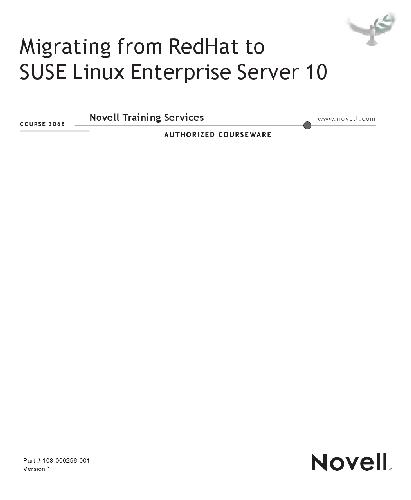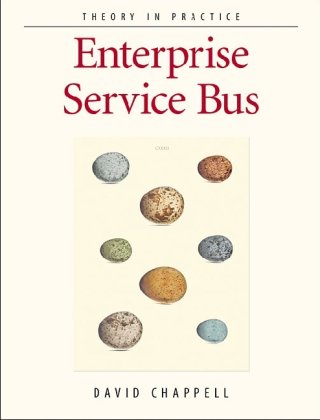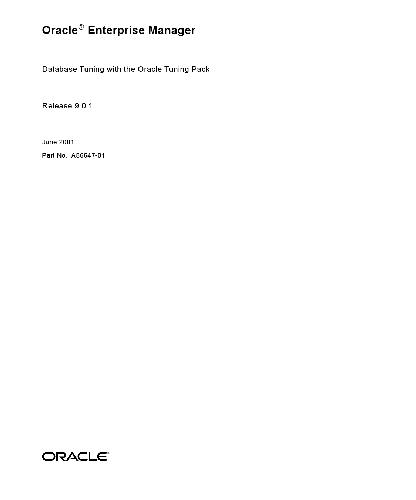Table of contents :
Title Page……Page 1
SECTION 1 Install SUSE Linux Enterprise Server 10……Page 3
Introduction……Page 13
Course Objectives……Page 14
Certification and Prerequisites……Page 15
SUSE Linux Enterprise Server 10 Support and Maintenance……Page 17
Novell Customer Center……Page 18
SUSE Linux Enterprise Server 10 Online Resources……Page 19
Exercises……Page 20
Exercise Conventions……Page 21
Objectives……Page 23
Boot from the Installation Media……Page 24
Select the System Language……Page 27
Select the Installation Mode……Page 28
Set the Clock and Time Zone……Page 30
Understand and Change the Installation Settings……Page 31
Verify Partitioning……Page 32
Select Software……Page 47
Start the Installation Process……Page 50
Set the Host Name……Page 51
Set the root Password……Page 52
Configure the Network……Page 53
Test the Internet Connection……Page 60
Novell Customer Center Configuration and Online Update……Page 61
Configure Network Services……Page 64
Manage Users……Page 65
Configure Hardware……Page 69
Finalize the Installation Process……Page 71
Objective 3 Troubleshoot the Installation Process……Page 72
Exercise 1-1 Install SUSE Linux Enterprise Server 10……Page 75
Summary……Page 76
Objectives……Page 79
The YaST User Interface……Page 80
The Role of SuSEconfig……Page 83
Exercise 2-1 Get to Know YaST……Page 85
Manage Installation Sources……Page 86
Install Software Packages……Page 87
Apply Security Updates……Page 90
Exercise 2-2 Install New Software……Page 95
Basics about Users and Groups……Page 96
User and Group Administration with YaST……Page 97
Set Defaults for New User Accounts……Page 108
Configure Security Settings……Page 111
Exercise 2-4 Configure the Password Security Settings……Page 122
Objective 4 Find the YaST Module You Need……Page 123
Summary……Page 126
Objectives……Page 129
Objective 1 Manage the Network with YaST……Page 130
Exercise 3-1 Manage the Network Configuration Information from YaST……Page 141
Set Up Network Interfaces with the ip Tool……Page 142
Set Up Routing with the ip Tool……Page 154
Exercise 3-2 Configure the Network Connection Manually……Page 159
Configure Name Resolution……Page 160
Files Holding the Network Configuration……Page 161
Objective 4 Use the NetworkManager to Configure the Network……Page 163
Summary……Page 166
Objectives……Page 169
Linux File Systems……Page 170
Linux File System Internals……Page 172
File System Journaling……Page 179
Additional File System Documentation……Page 180
Linux Device and Partition Names……Page 181
Design Guidelines for Implementing Partitions……Page 183
Manage Partitions with YaST……Page 186
Manage Partitions with fdisk……Page 188
Create a File System with YaST……Page 189
Create a File System with Command Line Tools……Page 191
Mount File Systems……Page 193
Exercise 4-1 Configure Partitions on Your Hard Drive……Page 199
Check a File System……Page 200
Exercise 4-2 Manage File Systems from the Command Line……Page 204
Use LVM Components……Page 205
Use LVM Features……Page 207
Configure Logical Volumes with YaST……Page 208
Configure LVM with Command Line Tools……Page 214
Manage Software RAID……Page 217
Exercise 4-3 Create Logical Volumes……Page 220
Summary……Page 221
Objectives……Page 223
Objective 1 Describe the Linux Load Procedure……Page 224
Kernel……Page 225
initramfs (Initial RAM File System)……Page 226
init……Page 227
What a Boot Manager Is……Page 229
Boot Managers in SUSE Linux……Page 230
Start the GRUB Shell……Page 232
Modify the GRUB Configuration File……Page 234
Configure GRUB with YaST……Page 236
Boot a System Directly into a Shell……Page 241
Exercise 5-1 Manage the Boot Loader……Page 244
The init Program and Linux Runlevels……Page 245
init Scripts and Runlevel Directories……Page 250
Change the Runlevel……Page 263
Compare Start Scripts between RHEL and SLES 10……Page 265
Exercise 5-2 Manage Runlevels……Page 266
Summary……Page 267
Objectives……Page 269
Understand the Architecture and Components of Postfix……Page 270
Configure Postfix……Page 277
Exercise 6-1 Send Mail in the Local Network……Page 294
Exercise 6-2 Use Postfix on the Internet……Page 297
Exercise 6-3 Use Lookup Tables……Page 313
Use Postfix Tools……Page 314
Setup a Basic Web Server……Page 316
Exercise 6-5 Test the Apache Installation……Page 320
Configure Virtual Hosts……Page 324
Exercise 6-6 Configure a Virtual Host……Page 328
Summary……Page 329
Objectives……Page 333
Discretionary Access Control……Page 334
Linux Security Modules……Page 335
Mandatory Access Control……Page 336
Objective 2 Create and Manage AppArmor Profiles……Page 339
Understand Profiles and Rules……Page 340
Administer AppArmor Profiles with YaST……Page 343
Administer AppArmor Profiles with Command Line Tools……Page 353
Exercise 7-1 AppArmor……Page 357
Start and Stop AppArmor……Page 358
View AppArmor’s Status……Page 359
Reload Profiles……Page 361
Security Event Report……Page 363
Security Event Notification……Page 366
Summary……Page 368
Objectives……Page 371
Objective 1 Understand the Concept of Virtualization……Page 372
Objective 2 Understand How Xen Works……Page 373
Understand Virtualization Methods……Page 374
Understand the Xen Architecture……Page 376
Objective 3 Install Xen……Page 378
Exercise 8-1 Install Xen……Page 381
Objective 4 Manage Xen Domains with YaST……Page 382
Exercise 8-2 Install a Guest Domain……Page 388
Understand a Domain Configuration File……Page 389
Use the xm Tool……Page 391
Exercise 8-3 Change Memory Allocation of a Guest Domain……Page 395
Automate Domain Startup and Shutdown……Page 396
Exercise 8-4 Automate Domain Startup……Page 397
Understand the Basic Networking Concept……Page 398
Understand Bridging……Page 399
Understand the Network Interfaces in domain0……Page 400
Exercise 8-5 Check the Network Configuration……Page 404
Use Domain Save and Restore……Page 405
Use Migration and Live Migration……Page 406
Summary……Page 407
Objectives……Page 411
Objective 1 iSCSI Background……Page 412
Red Hat Enterprise Linux 4……Page 414
SUSE Linux Enterprise Server 10……Page 415
Exercise 9-1 Set up an iSCSI Target and an iSCSI initiator……Page 433
Summary……Page 434
Objectives……Page 435
Objective 1 Global File System (GFS)……Page 436
OCFS2 Background……Page 437
OCFS2 Configuration……Page 438
OCFS to OCFS2 Migration……Page 445
GFS – OCFS2 Comparison Table……Page 446
Exercise 10-1 Set up an OCFS2……Page 447
Summary……Page 448
Objectives……Page 449
AutoYaST on SUSE Linux Enterprise Server 10……Page 450
Objective 2 Set up an Installation Server……Page 453
Objective 3 Create a Configuration File for AutoYaST……Page 459
Objective 4 Start the Installation……Page 464
Summary……Page 466
Objectives……Page 469
Objective 1 Migrating Services……Page 470
SECTION C Appendix: A Guide to SUSE Linux Enterprise Server for Red Hat Users……Page 493
Migrating from RedHat to SUSE Linux Enterprise Server 10
Free Download
Edition: version 1
Size: 19 MB (20373928 bytes)
Pages: 530/530
File format: pdf
Language: English
Publishing Year: 2006
Direct Download: Coming soon..
Download link:
Category: Computers , Information Systems: EC businessesSign in to view hidden content.
Be the first to review “Migrating from RedHat to SUSE Linux Enterprise Server 10” Cancel reply
You must be logged in to post a review.
Related products
- Computers , Information Systems: EC businesses
Effective Use of Microsoft Enterprise Library: Building Blocks for Creating Enterprise Applications and Services
Free Download - Computers , Information Systems: EC businesses
Oracle Enterprise Manager. Database Tuning with the Oracle Tuning Pack
Free Download - Computers , Information Systems: EC businesses
Designing SQL Server 2000 Databases for .NET Enterprise Servers
Free Download - Computers , Information Systems: EC businesses
Implementing Enterprise Portfolio Management with Microsoft Project Server 2002
Free Download - Computers , Information Systems: EC businesses
Skype Me!: From Single User to Small Enterprise and Beyond
Free Download







Reviews
There are no reviews yet.